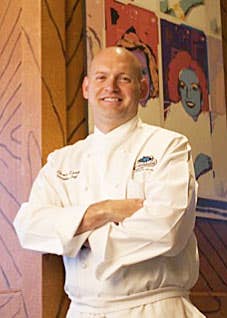
Food in the News: BP Oil Spill Forces New Orleans Chefs to Be More Creative
Chefs in New Orleans aren't scared to be creative in the face of the oil crisis in the Gulf of Mexico. After all, they say, creativity is part and parcel of the city's rich culinary tradition.
"There's an old Cajun saying that we'll eat anything that will crawl across our yard. The spill is just forcing our chefs to be more creative," says Lally Brennan, co-proprietor of Commander's Palace, one of the oldest restaurants in the city, founded in 1880.
Former Commander's chef Paul Prudhomme invented blackened redfish in the restaurant's kitchen in the 1970s, and the dish became so popular around the country that Prudhomme's suppliers in New Orleans couldn't meet the local demand for redfish. In fact, demand was so strong for redfish that since the 80s commercial sale of redfish has been illegal. So Prudhomme's creativity was rewarded with the need to be still more creative, to cover for the shortage he himself had brought about.
Commander's is part of the New Orleans-based Brennan restaurant chain, which also owns Cafe Adelaide in downtown New Orleans. In May, Cafe Adelaide chef Chris Lusk won the prestigious title of King of Louisiana Seafood at a statewide competition held in the Superdome. "They gave me a crown and everything," he jokes.
Oysters have become harder to find since the explosion of the BP Horizon rig in the Gulf of Mexico, even forcing P&J, the city's oldest oyster-shucking company, to close down operations on June 12 after 134 years.
In response to the shortage, Lusk has brought in an alligator sope at Cafe Adelaide, based on his upbringing in Texas. "Alligator isn't really seafood," he says. "But round here it counts as seafood."
Customers have kept coming. Meanwhile, Lusk says he intends to continue serving seafood at Cafe Adelaide until somebody tells him he can't. He won his title as seafood king, for example, by preparing some Tabasco soy-glazed shrimp, with locally sourced shrimp and, of course, locally sourced Tabasco, which is produced just two and a half hours up the road, on Avery Island, Louisiana.
Food writer Alan Richman may have accused New Orleans in the past of being a city restricted to "one menu." But Lusk is as intent as his predecessors were on creating new ideas from the city's diverse culinary influences — taking local ingredients and pushing the limits to make many menus.
Another of Lusk's creations is a spring roll made with local blue crab, local corn, and a little French Camembert. Continuing the Asian-European fusion, Lusk served the spring roll at the seafood festival with his distinctive take on a bun: the Vietnamese rice noodle.
"In New Orleans, there's a lot of Vietnamese people," he explains. "But we used semolina-based vermicelli, to reflect the strong Italian influence that's also here, and then boiled them in absinthe, for a little of the French."
Now that's a dish as New Orleans as it gets.
Keep Reading
Continue to Next Story










